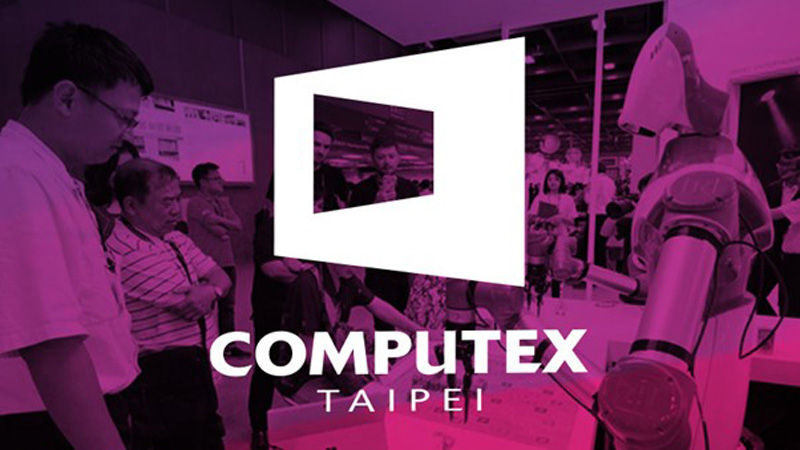Canalys Forums 2022: APAC channel strategy for 2022 and 2023
7 June 2022

Computex 2022 saw the absence of major PC industry players and felt like a lost opportunity to build on market momentum.
The PC industry is evolving faster than it was a few years ago. The global pandemic was a significant driver of technological advances in the PC and semiconductor industries. As user needs grew rapidly, the PC industry responded with innovation in device specification, design, form factor and even green credentials. Original release timelines for node process technologies were accelerated to support these needs in the face of strong customer demand. All of this points to a trend of PC technologies becoming obsolete more quickly. Specifications that were good just a year or two ago are already starting to look out of date.
This shift will have both positive and negative effects. When current technologies become outdated, people crave innovation, which drives faster PC replacement cycles. On the other hand, pressing for greater innovation in a short period puts pressure on PC companies to match people’s expectations and can slow future breakthroughs, as happened at Computex this year.
Vendors still emphasizing gaming
The gaming segment has been a hot topic in the PC industry for a long time now. Since the start of the pandemic, the total addressable market for PC gaming has grown significantly and vendors were quick to diversify their portfolios to cater to this trend. CES 2022 highlighted some fantastic gaming innovations. Asus launched a gaming tablet, while Dell, MSI, Razer, Acer and Lenovo all announced significant revamps to their gaming notebooks. Gaming and hybrid work were the two themes that took center stage in Las Vegas in January. Fast forward six months to Computex 2022, and the themes around innovation remain the same.
The eye-catching device announcements at Computex were gaming peripherals. Vendors such as MSI, Asus and LG all teased their own gaming displays. MSI is preparing to launch its own monitor with Samsung’s QD-OLED display technology. Asus has pushed the boundaries with the announcement of its ROG Swift 500Hz display, with huge gains in refresh rate and response times. The emphasis on displays and other peripherals suggests that vendors feel the need to diversify their revenue sources as their core gaming PC businesses face challenges this year due to high saturation and slowing consumer demand.
A positive sign came as Corsair, a company mainly known for its gaming peripherals, introduced its first-ever gaming notebook, the Voyager a1600 – an AMD Advantage Edition laptop equipped with both Ryzen 6000 and AMD Radeon RX 6000 processors. Following Razer’s lead and success, Corsair has tried to broaden its hardware portfolio. The move to offer its own notebook follows its 2019 acquisition of Origin PC to appeal to non-DIY PC gamers.
AMD’s announcements add pressure to Intel
Not long after it released its Ryzen 6000 processors, AMD has now announced the hotly anticipated Ryzen 7000 series, manufactured using 5nm technology to compete with Intel’s 12th-generation 7nm chips. The Ryzen 7000 series will be the first 5nm chips to hit the market, giving AMD first-mover advantage. These chips are set to outperform Intel’s Alder Lake range as best-in-class gaming CPUs. AMD has also publicly challenged Intel’s 12th-generation chipsets with its sophisticated 3D rendering capabilities, which Ryzen outperformed by 31%. These chipsets should go into mass production in the fall of 2022.
Furthermore, AMD revealed its Mendocino mainstream mobile platform at Computex. This latest launch is a direct challenge to Intel’s strength in the US$400-to-US$700 segment. With the acquisition of Xilinx, AMD is set to broaden its presence in key technologies, such as data centers, where Xilinx has a strong network and AI presence, and 5G communications, as well as in verticals such as automotive, manufacturing, aerospace and defense. These moves strengthen AMD’s ability to compete with Intel in new business areas. Intel’s absence from the event gave AMD the spotlight, and it has taken advantage of the opportunity to highlight how it can reclaim the market share that Intel has clawed back because of the boom in commercial demand for PCs.
Asus an unexpected winner with its focus on commercial devices
Asus, a mainly consumer-focused brand, had a strong showing with its commercial offerings. This was a smart move, given that the commercial PC segment is expected to grow 5% this year, even as the overall market falls 6% according to the latest Canalys forecasts. Asus’ ExpertBook B9 and ExpertBook B7 Flip 5G were the most prominent commercial devices launched at the event. The company also introduced a slew of Vivobook devices ahead of the event, and on the Chrome front, its Chromebook Flip CX5 is squarely aimed at productivity use cases. Asus has been consistently making noticeable moves to strengthen its commercial portfolio, which is also reflected in Canalys’ internal data. The company’s commercial shipments grew by a remarkable 31% in the last two quarters alone compared with the same period a year ago.
Despite the innovations highlighted at Computex, the event felt underwhelming, as many of the major players did not attend, partly because of travel restrictions still imposed in Taiwan. This year’s Computex debuts came from a small number of players, largely from the host country. Unfortunately, I believe we will look back at Computex 2022 as a lost opportunity for the industry to highlight the momentum it has gained over the last few years and to deliver excitement about innovations. With vendors now facing a new wave of supply chain issues and pressure on consumer demand from rising inflation, they will likely be hard-pressed to make up for this in the coming quarters. Nonetheless, the PC industry has come a long way in terms of innovation and importance since the start of the pandemic and Canalys believes the long-term future remains bright.